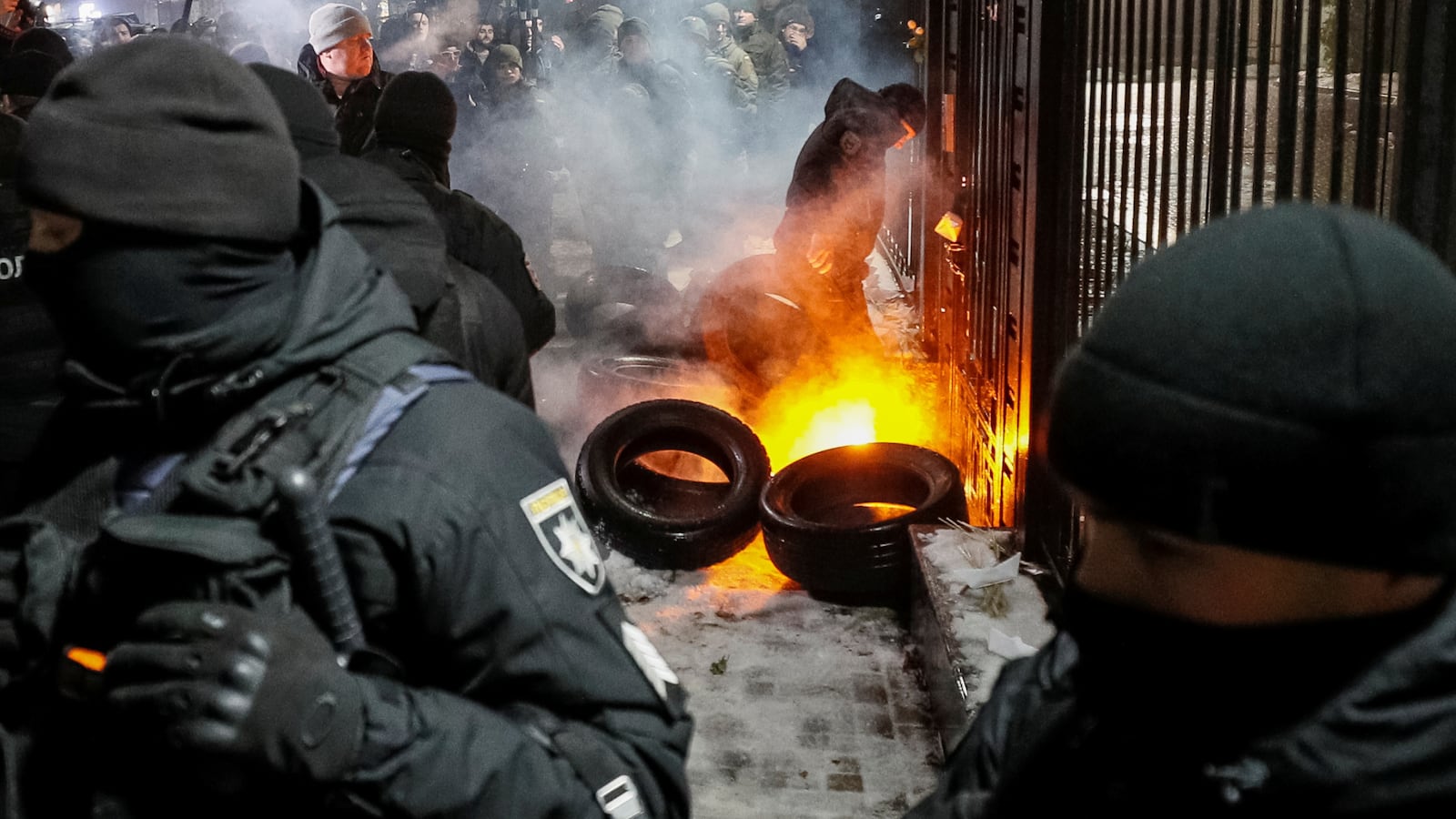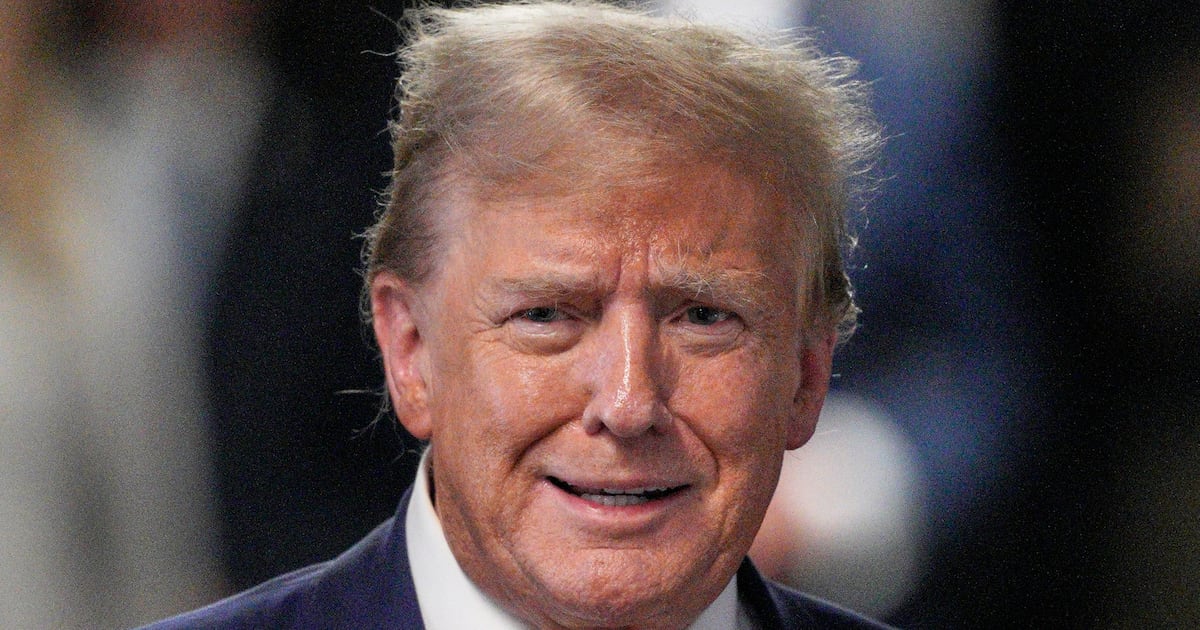Russian security forces deployed coast guard vessels, jet fighters, and attack helicopters in an overwhelming assault on three Ukrainian navy boats attempting to pass through the narrow, Russian-controlled strait connecting the Black Sea and the smaller Sea of Azov on Sunday.
Experts said the attack signaled a wider Russian move against Ukraine, four years after Moscow’s forces seized the strategic Crimean Peninsula and backed pro-Russian separatists in the eastern Ukraine region known as Donbas.
It also presents U.S. President Donald Trump with a major new foreign crisis just days before he is due to meet Russian President Vladimir Putin and other world leaders at the G-20 summit in Buenos Aires on Nov. 30 and Dec. 1.
Britain’s Express newspaper headlined “World War 3,” which is pure hyperbole, but U.S. Ambassador to the United Nations Nikki Haley (still in her job until the end of the year) announced an emergency meeting of the Security Council for Monday.
Trump made no mention of the incident on his Twitter feed, but did post an ill-timed reminder that in his view NATO countries are ripping off the United States.
In Kiev, protesters burned tires in front of the Russian embassy as the government moved toward a declaration of martial law.
The Sea of Azov lies between Crimea and the Russian mainland, and is bordered by a number of Ukrainian ports, including the major city of Mariupol, which is near the Donbas front lines.
The confrontation began Sunday morning, when the Ukrainian navy tugboat Yana Kapu and the brand-new Gyurza-M-class gunboats Berdyansk and Nikopol set sail from Odessa, Ukraine’s main port on the Black Sea. They sailed east around Crimea and toward the narrow Kerch Strait, which Russia spanned with a bridge after the largely bloodless but forced annexation of Crimea in 2014.
As the Yana Kapu, Berdyansk, and Nikopol approached the Kerch Strait, the Russians towed a cargo vessel across the narrow passage, preventing the Ukrainians from entering the Sea of Azov.
Russian and Ukrainian troops exchanged fire and Russian Su-25 attack planes and Ka-52 attack helicopter flew overhead. A Russian coast guard vessel reportedly rammed the Ukrainian tug. Russian troops boarded and took control of all three Ukrainian boats. The Ukrainian government in Kiev told the BBC the assault injured six of its sailors.
After the Russian annexation of Crimea, Ukraine was left with just one large warship—the 404-foot-long frigate Hetman Sahaydachniy—plus a few dozen smaller boats. Hopelessly outgunned by the much larger Russian navy, the Ukrainian navy hurriedly launched production of the small Gyurza-M-class gunboats.
Each of the 70-foot-long gunboats carries a crew of five and a pair of cannons. Ukraine had managed to build just six before the Russians captured two of them Sunday.
“This is a huge blow to Ukraine’s ailing navy,” tweeted Christopher Miller, a correspondent for Radio Free Europe/Radio Liberty.
Kiev has every right to send its boats through the Kerch Strait, according to the terms of a 2003 agreement between Russia and Ukraine. “Merchant ships and warships, as well as other state vessels under the flag of the Russian Federation or Ukraine operated for non-commercial purposes, enjoy freedom of navigation in the Azov Sea and the Kerch Strait,” according to the Russian-Ukrainian agreement. But that was signed more than a decade before Putin decided to toss earlier agreements out the window and, as he saw it, “take back” Crimea.
Since the seizure of Crimea, the 2003 agreement has not deterred Russia from trying to gain total control of the Sea of Azov. “Russian forces have been working to make the Azov Sea an internal Russian body of water in order to both cut off Ukraine’s eastern ports and cement Moscow’s hold on Crimea,” writes Damon Wilson, executive vice president of the Atlantic Council.
It’s not impossible that Sunday’s clash happened on impulse. “It is an example of things happening without necessarily the parties involved having a clear idea of what they are doing,” Pavel Podvig, an independent expert on the Russian military, told The Daily Beast. “It is possible, of course, that there was a deliberate action of each side or one of them, but it’s also possible that neither side had a plan and things just happened.”
On Monday, the Russians reportedly removed the tanker they had used to block the main passage through the Kerch Strait.
But it’s telling that, at roughly the same time the Russians were attacking Ukrainian vessels, someone hacked the website of the Ukrainian defense ministry. The “website going down almost simultaneously suggests the Russians planned [the Kerch assault] in advance,” Richard Moss, a professor at the U.S. Naval War College in Rhode Island, told The Daily Beast.
The entire pattern of Russian expansion into the territories of what once was the Soviet Union and, before that, part of the Russian empire, is one of “hybrid warfare” using covert action, cyberoperations, and limited military force.
“Moscow’s incrementalist approach is like the ‘creeping annexation’ we witnessed in Georgia in 2008—any single move tends not to be dramatic, but in the aggregate Russia makes strategic gains,” Wilson wrote.
On Sunday, according to Wilson, “the Russians escalated with the aim of intimidating Ukraine into backing off its own effort to assert its access to these international waters and its own ports.”
Ukraine, NATO, and the European Union condemned Russia. The Ukrainian foreign ministry vowed to “inform our partners about the aggressive acts of the Russian Federation in the Sea of Azov. Such actions pose a threat for security of all states of the Black Sea Region, thus demand clear reaction of international community.”
The European Union called on Russia “to restore freedom of passage at the Kerch Strait and urge all to act with utmost restraint to de-escalate the situation immediately,” according to Maja Kocijancic, an EU spokesperson.
Meanwhile, NATO “fully supports Ukraine’s sovereignty and its territorial integrity, including its navigational rights in its territorial waters,” alliance spokesperson Oana Lungescu tweeted.
Russia blamed Ukraine. “The entry of Ukrainian vessels into the territorial waters of the Russian Federation is a blatant provocation by Ukraine, an attempt to unleash an armed conflict in the Kerch Strait,” Peter Tolstoy, a member of the Russian parliament, told Kommersant, a Russian newspaper. “Apparently, this was done by the Kiev authorities in order to contribute to the escalation of the situation.”
As words fly and Russia impounds a third of Ukraine’s new gunboats, the risk of escalation is high. “I hope that this will be contained,” Podvig said, “but we don’t know.”







